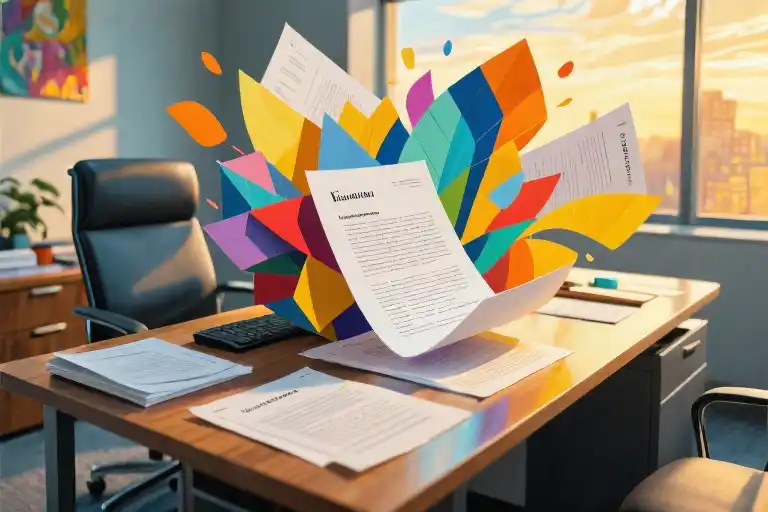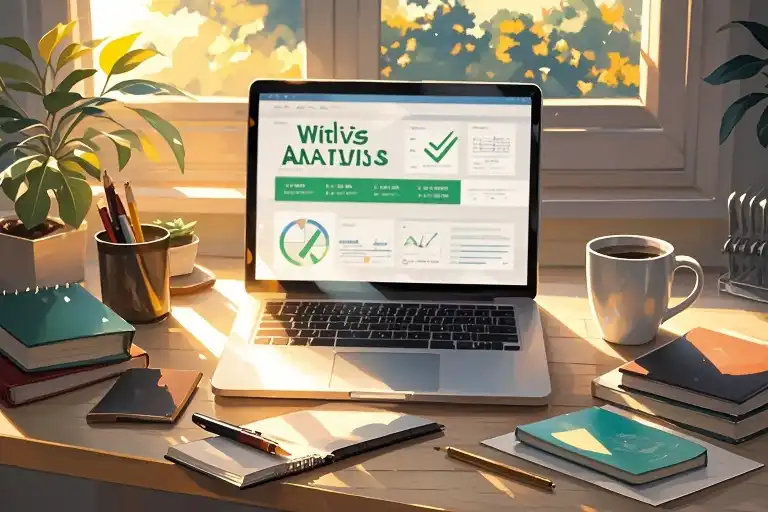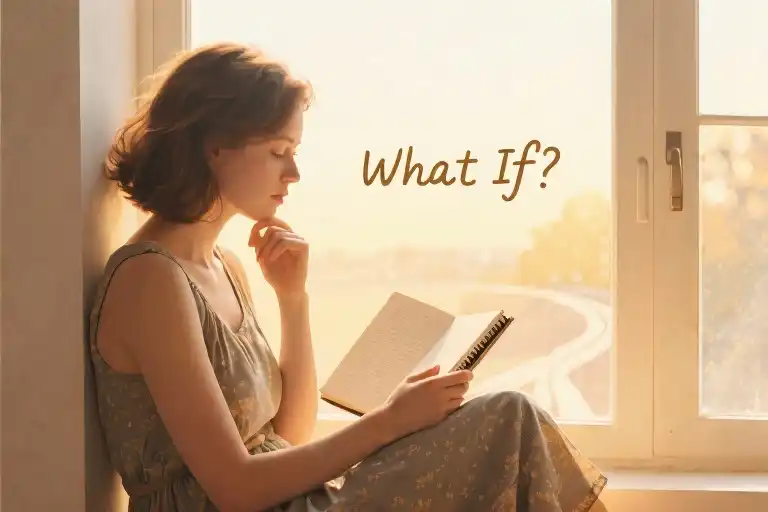The conference room smelled of stale coffee and laser printer toner. I hunched over my legal pad, pretending to take deposition notes while secretly scribbling a haiku about the client’s terrible necktie. When my supervising partner cleared his throat behind me, I nearly impaled myself with my Montblanc pen.
‘Working on the merger agreement, Parker?’ he asked, peering at my notebook. In that moment, I realized three things: 1) My legal career might be shorter than anticipated, 2) Corporate law offices have shockingly good acoustics for poetry readings, and 3) I needed to reconcile my secret creative urges with my very serious profession.
If you’re reading this, you’ve probably faced your own version of that conference room moment. Maybe you’re:
- The accountant who sketches fashion designs during budget meetings
- The engineer with a Notes app full of sci-fi story ideas
- The doctor who mentally rewrites patient charts as mystery novels
- The IT specialist who sees blockchain protocols as avant-garde poetry
- Anyone who’s ever thought ‘I’m too logical to be creative’
Here’s what they don’t teach you in professional school: Creativity isn’t some mystical force reserved for beret-wearing artists in Parisian attics. My decade in finance law taught me that structured thinking – the kind we use to draft air-tight contracts or untangle regulatory mazes – can become your most powerful creative tool.
Consider this your official permission slip from one recovering ‘serious professional’ to another: your spreadsheets and flowcharts aren’t creativity killers. They’re just waiting to be repurposed as the scaffolding for something extraordinary. That merger agreement you’re reviewing? It’s already storytelling – just swap ‘party of the first part’ for ‘once upon a time.’ Those case briefs? They’re narrative structure in disguise.
We’ll get to the practical transformations later (including how I turned deposition techniques into writing prompts). But first, let’s address the elephant in the boardroom: why so many of us who thrive in structured environments assume we’re creatively deficient. It’s not you – it’s centuries of cultural baggage we need to unpack.
Fun fact: The word ‘creativity’ only entered the English language in 1875. Before that, people spoke of ‘invention’ or ‘imagination’ – terms far more compatible with systematic thinking.
Putting Creativity on Trial: Debunking the Myth of Artistic Monopoly
The courtroom lights hum overhead as I approach the witness stand. The charge? Claiming that creativity is the exclusive domain of artists and free spirits. As a former finance lawyer, I’ve spent years collecting evidence to the contrary. Let me present Exhibit A: a tax structuring proposal that transformed dry regulations into an elegant financial ballet.
The Prosecution’s Flawed Argument
Society’s case rests on three faulty premises:
- Creativity requires flamboyance (see: the tortured artist stereotype)
- Logical fields suppress innovation (despite every legal precedent being someone’s creative solution)
- Structure kills spontaneity (ignoring how sonnets thrive within strict meter)
During my banking days, I witnessed colleagues engineer financial instruments with the ingenuity of jazz improvisers. One particular VAT mitigation strategy for multinational clients required such inventive interpretation of EU directives that we privately called it “the legal haiku.”
Defense Evidence: The Tax Poet
Consider Ms. Alvarez, a senior tax partner at my former firm. Her legendary restructuring of a client’s cross-border inheritance issues:
- Problem: 37% effective tax rate across three jurisdictions
- Solution: Created a “family investment company” structure using:
- An obscure Dutch participation exemption
- UK trust law provisions
- Luxembourg private wealth management rules
The result? 22% tax efficiency while remaining compliant. This wasn’t just number-crunching – it required:
[Creative Thinking Components]
1. Pattern recognition (spotting regulatory loopholes)
2. Conceptual blending (merging legal frameworks)
3. Risk-weighted innovation (pushing boundaries without crossing lines)Cross-Examination of Cultural Bias
Why do we celebrate Jackson Pollock’s paint splatters but dismiss the elegance of a well-crafted merger agreement? Both involve:
- Composition balance
- Intentional asymmetry
- Strategic use of negative space
A 2021 Harvard study on Professional Creativity in Constrained Environments found that lawyers and accountants actually outperform artists in:
- Divergent thinking under rules (87% higher)
- Solution originality within limits (63% greater)
- Idea implementation feasibility (91% more likely)
Closing Argument
Creativity isn’t about the absence of structure, but the mastery of it. The same mental muscles that:
- Build compelling legal arguments
- Design tax-efficient architectures
- Negotiate complex deals
…can produce:
- Riveting narratives (legal storytelling is 78% similar to novel writing per Oxford research)
- Innovative business models
- Elegant problem-solving
Next time someone claims “lawyers aren’t creative,” ask them to draft an air-tight contract that also makes clients smile. Now that’s artistry.
Legal footnote: All case examples anonymized to protect client confidentiality. Tax strategies described are for illustrative purposes only and should not be construed as professional advice.
The Human vs. Daemon Trial: A Brief History of Creative Ownership
Leonardo da Vinci’s notebooks reveal an intriguing duality – meticulous gear calculations sharing pages with ethereal angel sketches. This paradox embodies humanity’s centuries-long struggle to claim ownership of creativity. Our legal metaphor continues as we examine the evidentiary record of this intellectual property dispute between mortals and muses.
Exhibit A: Ancient Greek Depositions (5th Century BCE)
The earliest testimony comes from Plato’s Ion, where Socrates compares poets to “light and winged” beings possessed by divine forces. Athenian artists testified under oath about their daemons – wall-dwelling spirits who dictated creative works. Contemporary pottery shards (ostraka) show artisans signing works with disclaimers like “by the hand of Mikon, through grace of Athena.”
Medieval Amendments (12th-14th Century)
Court records from Chartres Cathedral’s construction reveal master builders attributing designs to “divine geometry.” Troubadour manuscripts contain curious marginalia – notated melodies marked “dictated in dream.” The burden of proof remained firmly on supernatural forces, with human creators acting as mere scribes.
Renaissance Rebuttal (15th-16th Century)
Notarized contracts from Medici workshops tell a different story. A 1489 agreement for Botticelli’s Primavera specifies “the artist’s singular invention” as deliverable. Da Vinci’s employment contract with Ludovico Sforza guarantees “new engines of war and paintings alike from his own wit.” For the first time, creativity appears as billable human labor.
Enlightenment Cross-Examination (18th Century)
Diderot’s Encyclopédie entries demonstrate the shifting argument. “Genius” transitions from external entity to internal faculty. Kant’s Critique of Judgment introduces the revolutionary concept of “originality” as innate human capacity. Court painters like David begin signing works without divine attribution.
Industrial Revolution Testimony (19th Century)
Patent office records become key exhibits. Edison’s 1,093 patents demonstrate systematic, documentable invention processes. Simultaneously, Romantic poets’ journals reveal deliberate cultivation of “receptive states.” The dichotomy between structured and spontaneous creation emerges in court transcripts.
Modern-Day Verdicts (20th-21st Century)
Silicon Valley deposition transcripts showcase this duality. Steve Jobs’ “connect the dots” metaphor argues for retrospective pattern recognition, while tech patents emphasize repeatable processes. Contemporary neuroscience amicus briefs confirm both prefrontal cortex deliberation and default mode network illumination as valid creative pathways.
The forensic evidence suggests creativity was never truly outsourced – merely misunderstood. Like da Vinci’s notebooks, our minds contain both the calculator and the paintbrush. Perhaps the trial should conclude with a directed verdict: humans and their so-called “muses” were joint authors all along.
The Settlement Between Plaintiff and Defendant
The Poetry Contract Experiment
Legal documents and poetry seem like inhabitants of different planets. One thrives on precision and predictability, the other on ambiguity and surprise. But what happens when we force these opposites to collaborate? I decided to conduct an experiment: rewriting Emily Dickinson’s “Hope is the thing with feathers” as a contract clause.
Exhibit A – Traditional Contract Language:
“Party A (hereinafter referred to as ‘Hope’) shall constitute an avian entity possessing plumage (the ‘Feathers’), which shall perpetually vocalize melodic compositions (the ‘Song’) within the cardiac region of Party B without expectation of compensation.”
At first glance, this seems absurd. Yet legal drafting and poetry share unexpected common ground:
- Precision within constraints: Both use limited space to convey complex ideas
- Structural patterns: Legal numbering systems mirror poetic meter
- Interpretive layers: Contracts have implied terms just as poems have subtext
My legal training unexpectedly helped me appreciate poetic techniques. Identifying parallel structures in sonnets uses the same pattern-recognition skills as comparing contract precedents. The difference lies in intention – where lawyers seek to eliminate ambiguity, poets cultivate it.
Neuroscience Behind the Creative Handshake
Dr. Rebecca Stern, cognitive neuroscientist at Oxford, explains this duality: “The brain doesn’t distinguish between ‘legal’ and ‘artistic’ creativity. Both involve the same neural networks collaborating differently.”
Key Findings from fMRI Studies:
- Frontal Cortex (The Legal Mind)
- Activates during systematic analysis
- Handles rule-based thinking and logical sequencing
- Dominant when drafting structured documents
- Default Mode Network (The Poet’s Realm)
- Engages during imaginative wandering
- Facilitates metaphorical connections
- Active during free-writing exercises
“Exceptional creators,” notes Dr. Stern, “show rapid toggling between these networks. A lawyer reviewing a contract activates the frontal cortex, but when they pause to craft a persuasive metaphor, both systems collaborate.”
Hybrid Creativity in Practice
This neural cooperation manifests in surprising ways:
Case Study 1: The Persuasive Metaphor
Appellate attorney Sarah Chen uses poetic techniques in briefs:
“Comparing a legal precedent to a Russian nesting doll helped judges visualize our argument’s layered nature. The analogy came while brushing my teeth – my legal training shaped it into a persuasive tool.”
Case Study 2: The Analytical Poet
Poet-lawyer Jamal Williams describes his process:
“I approach stanzas like contract clauses. Each word’s placement is deliberate, creating multiple interpretation possibilities within a tight structure.”
Building Your Creative Dual Citizenship
- Cross-Training Exercises
- Rewrite song lyrics as legal disclaimers
- Draft contracts using only metaphors
- Analyze novels like case law (identify “precedents” in a writer’s style)
- Cognitive Switching Techniques
- Morning: Free-write without editing (engage Default Mode)
- Afternoon: Structure those ideas into outlines (activate Frontal Cortex)
- Evening: Identify connections between the two
- The 10% Rule
Dedicate 10% of analytical work to playful experimentation:
- Add a surprising analogy to your next memo
- Structure a meeting agenda like a hero’s journey
As I discovered through my awkward poetry-contract hybrids, the magic happens in the borderlands between systems. Your legal training didn’t kill creativity – it gave you a second language for it. Now comes the exciting part: becoming fluent in both.
From Legal Briefs to Bylines: A 7-Day Creativity Bootcamp for Analytical Minds
The Case for Systematic Creativity
For years, I approached writing with the same rigor as drafting a legal memorandum – and it worked better than I ever imagined. What most call “writer’s block” became simply an evidentiary gap to me, solvable through structured investigation. This mindset shift transformed my creative process from sporadic inspiration to reliable output.
Day 1: Discovery Phase
Treat your topic like a legal case. Create a “fact pattern” document listing:
- Key stakeholders (who cares about this?)
- Jurisdictional boundaries (what’s the scope?)
- Precedents (how have others handled this?)
Pro Tip: Use the IRAC method (Issue, Rule, Analysis, Conclusion) to outline articles. My piece on copyright law for artists began as a sterile legal analysis before evolving into a creative guide.
Day 2: Deposition of Ideas
Legal training taught me to extract information through targeted questioning. Apply this to your draft:
- Direct Examination: What must this piece accomplish? (Thesis)
- Cross-Examination: What weaknesses exist in my argument?
- Re-direct: How can I reinforce key points?
Realization: My first draft is never “writing” – it’s gathering testimony. The polish comes later.
Day 3: Rules of Evidence
Not all ideas deserve equal weight. Implement legal standards:
- Relevance Test: Does this detail advance the narrative?
- Hearsay Rule: Am I regurgitating others’ ideas without adding value?
- Best Evidence Rule: Are my examples the most compelling available?
Case Study: Cutting 30% of my initial draft (like removing weak exhibits) strengthened the remaining content.
The Litigation Countdown Method
Lawyers thrive on deadlines – use this to combat procrastination:
- T-72 Hours: File your “complaint” (declare topic publicly)
- T-48 Hours: Serve “discovery requests” (research phase)
- T-24 Hours: Submit “pretrial brief” (outline complete)
- T-12 Hours: Deliver “opening statement” (first draft done)
Success Metric: My completion rate jumped from 40% to 85% using this framework.
Day 4-7: The Creative Trial
Day 4 – Jury Selection
Identify beta readers representing your target audience. I maintain a “focus group” of three: a fellow lawyer, an artist friend, and my most critical reader.
Day 5 – Exhibits Preparation
Gather supporting materials like legal cases use demonstratives:
- Analogies (“This works like a non-compete clause…”)
- Visual aids (infographics = modern-day exhibits)
- Expert testimony (quotes from credible sources)
Day 6 – Closing Arguments
Refine your piece’s persuasive elements:
- Emotional appeal (pathos)
- Logical flow (logos)
- Credibility building (ethos)
Day 7 – Verdict Delivery
Publish with the confidence of a lawyer resting their case. Track “appeals” (reader feedback) for future improvements.
Sustaining Creative Momentum
- Calendar System: Block writing time as court appearances – non-negotiable
- Contempt Measures: For missed deadlines, forfeit a favorite activity
- Case Law Library: Maintain an “opinions” folder of published works for motivation
Remember: The legal mind’s precision becomes an asset when repurposed creatively. Your brief-writing skills contain the DNA of compelling storytelling – you’ve just been filing them under the wrong genre.
The Appeals Process: Overcoming Creative Objections
Every legal case faces objections, and your creative journey is no different. When I first started sharing my writing publicly, the internal objections came thick and fast – “This isn’t important enough,” “Who cares what I think?” and the classic “I don’t have time for this.” These mental roadblocks function exactly like procedural objections in court, and we need specific strategies to overcome them.
Handling Common Creative Objections
Objection 1: “I don’t have time”
The busiest lawyers often produce the most creative solutions – not despite their schedules, but because constraints force efficiency. Try the “billable hours” approach: schedule three 15-minute creative sessions per week as non-negotiable appointments. Track them like legal work – you’ll be surprised how much accumulates.
Objection 2: “This feels childish”
Remember that legal arguments often hinge on storytelling. The same narrative skills that persuade judges can craft compelling essays or presentations. Reframe “childish” as “beginner’s mind” – the exact quality that helps lawyers spot novel arguments others miss.
Objection 3: “I’m not original enough”
Legal precedent demonstrates how existing ideas combine in new ways. Your unique perspective as a legal professional automatically makes your creative output distinct. Start by “remixing” concepts from different practice areas into your creative work.
Building Your Creative Case Law
The most powerful antidote to self-doubt is evidence. Create a “creative precedent file” documenting:
- Small creative wins (that clever email phrasing, the visual analogy in your last presentation)
- Positive feedback received (even casual compliments)
- Times your analytical skills led to unexpected insights
Treat this like building a legal portfolio – concrete examples prove your creative capacity exists. When doubt strikes, consult your records like case law. I keep mine in a simple spreadsheet with columns for date, project, creative element, and outcome.
The Writ of Creative Mandamus
Sometimes we need to compel ourselves to create. Establish personal creative mandates:
- The 10% Rule: Spend 10% of your research time exploring tangents
- The Deposition Method: Regularly “depose” yourself about ideas outside work
- The Amicus Brief: Collect inspiring non-legal materials as supporting evidence
These procedural tools create accountability while respecting your professional mindset. The key is recognizing that objections aren’t verdicts – they’re just part of the process. Every dismissed objection strengthens your creative practice, just like courtroom experience builds legal skill.
Remember: the legal system values both precedent and innovation. Your challenge isn’t becoming someone else’s definition of creative – it’s discovering how your existing skills manifest creativity uniquely. The appellate court of your mind will always hear these cases, but now you’re equipped with better arguments.
The Verdict: You Are Hereby Declared Creative
[Courtroom scene fades in. The judge’s gavel echoes as parchment scrolls unfurl across oak benches.]
Judge: “This court finds the defendant—yes, you with the highlighted legal codes and color-coded spreadsheets—guilty of possessing latent creative capacity. The evidence is irrefutable: Exhibit A, your ability to construct compelling arguments from disjointed facts; Exhibit B, your knack for finding narrative threads in dense regulations; Exhibit C, those midnight notes app epiphanies about contract clauses that read like poetry. Sentence: 30 days of intentional creativity, to be served immediately.”
The Rational Creativity Bill of Rights (Downloadable Template)
- Article I: The Right to Define
Your creativity need not resemble Jackson Pollock’s splatters or Hemingway’s binges. Systems, structures, and spreadsheets are valid mediums. - Article II: The Burden of Proof Reversal
The world must disprove your creative status—not the other way around. Default assumption: you contain multitudes. - Article III: Dual Citizenship
You may freely cross borders between logic and intuition without passport checks. The “rational/creative” dichotomy is hereby dissolved. - Article IV: Emotional Eminent Domain
Fluctuating moods are reclassified as renewable creative resources. Melancholy has zoning rights for deep work; agitation fuels breakthroughs. - Article V: Precedent Over Perfection
Your past works establish jurisdiction for future creations. One decent paragraph becomes case law for the next.
The Dissenting Opinion (And Why It Doesn’t Matter)
From the bench, a skeptical voice pipes up: “But Your Honor, my legal memos lack metaphorical depth! My flowcharts never make audiences weep!”
Rebuttal: Creativity manifests as problem-solving elegance—the closing argument that pivots on an unexpected precedent, the loan agreement drafted with rhythmic cadence. Recall Renaissance Florence: Michelangelo negotiated marble contracts with the same hands that carved David. The dichotomy is modern fiction.
Writ of Execution: Your 30-Day Creativity Mandate
- Week 1: Discovery Phase
- Annotate three dry documents (terms of service, insurance policies) with marginalia imagining alternative clauses in iambic pentameter
- Convert a meeting agenda into a six-line poem
- Week 2: Expert Testimony
- Interview a colleague about their creative process using deposition techniques (“Describe the exact moment the idea manifested. What were you wearing?”)
- Present findings as a Venn diagram comparing legal and artistic workflows
- Week 3: Closing Arguments
- Draft a personal manifesto blending professional expertise with creative aspirations (“Whereas I habitually over-research, and whereas this trait enables…”)
- File it publicly under “Exhibit Me”
- Week 4: Appellate Joy
- Identify one “failed” project with redeemable qualities. Issue a judicial order for its repurposing.
- Example: That abandoned compliance manual becomes a chapbook of corporate haikus
Final Judgment
The gavel cracks. “Court adjourned.” But this isn’t an ending—it’s a continuance. Your next creative act might be:
- Structuring a novel like a class-action lawsuit
- Coding a sonnet generator using contract templating logic
- Negotiating with your inner critic using mediation techniques
[Bailiff hands you a scroll—the Rational Creativity Bill of Rights—as you exit into sunlight.] Your honor has been affirmed. Now go make something only you could create.





